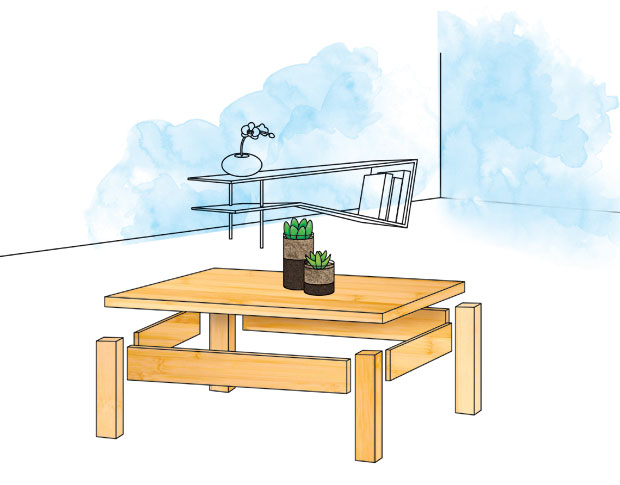Green Room: Earth-Friendly Furniture
What we put in our homes, we take from the world around us. And if we aren’t careful when buying a new dining room table or entertainment center, there is a good chance the earth’s natural order will be one tree weaker. Some furniture manufacturers can make a number of environmentally ruinous decisions in offering you a seat, so it’s important to be aware of the earth-friendly criteria surfacing locally and abroad.
SEE THE FOREST FOR ITS TREES
The Forest Stewardship Council is an international non-profit organization that encourages economic, environmental and social responsibility in global forestry and tree farm practices. An FSC certification on a product such as lumber means it was produced using environmentally sound methods. A piece of furniture that has been certified by the FSC ensures that an entire canopy’s ecosystem hasn’t been decimated.
RECLAIM YOUR MATERIALS
If you feel that a couch with only three good legs has a foot out the door, consider this before sending it to the landfill: Junked furniture can be used to repair other furniture. You can donate your broken foundation to organizations such as Reuse Hawaii for deconstruction and reselling, ensuring that those busted components never see the sidewalk. And, being in the market for a replacement means you can take the added step of looking for furniture made out of reclaimed materials. This cyclical process gives Mother Nature some breathing space and keeps the sidewalks clear of your debris.

ILLUSTRATION BY KAMELE ESKARAN
KEEP YOUR GREENGUARD UP
Beware of VOCs (volatile organic compounds) – harmful chemicals that evaporate off of your furniture at room temperature in a process called offgassing. Chemicals in varnishes and stains can toxify your living space, and in areas with poor ventilation, these harmful toxins can build up and become harmful to your health. This is especially true for children and pets. Green-guard Certification identifies and creates criteria for products that use materials with low chemical emissions, meaning certified products will be gentler to the environment inside and outside your home.
BAMBOO? SHOOTS!
Bamboo is nature’s hero. It’s a tough grass that can stand in as the protector of trees. Stronger than traditional lumber, concrete, graphite and even steel, bamboo has been put to use by architects as the go-to material when it comes to greener building. It can be flattened, pressed, stripped and molded into any design. And with a maximum growth speed of 4 feet a day, it is the fastest growing plant on the planet. A certain species of bamboo forest will replenish itself faster than you can say, “let’s re-floor.”
SPLURGE ON QUALITY
Buy furniture that’s durable. Even the greenest items use up natural resources and energy when recycled. Buying green, eco-friendly furniture may cost a bit more, but in the long run, it’s safer for the environment and more aligned to the kind of future we’d want for our children and their children. So be picky with your furniture, scrutinize each element and avoid overly complicated fabrications that are impossible to take apart (i.e., impossible to repair). Think of each piece as an heirloom, an item you want to keep for a long time that’s worth passing on to others. Oak furniture can be a good idea for you if you are considering buying durable and eco-friendly furniture. You might want to look at websites like Oak Furniture House that sell environment-friendly furniture. Who knows, you might just find a piece (furniture) that suits your taste!
DID YOU KNOW: The Honolulu Furniture Co. also builds its eco-friendly line of furniture using lumber from Monkeypod trees? In a shift away from traditional koa, and under the guidance of the Hawaiian Legacy Hardwood, this forward-thinking company has created a sleek, new modern line called the Forward Thinking Collection. Visit www.honolulufurniturecompany.com.